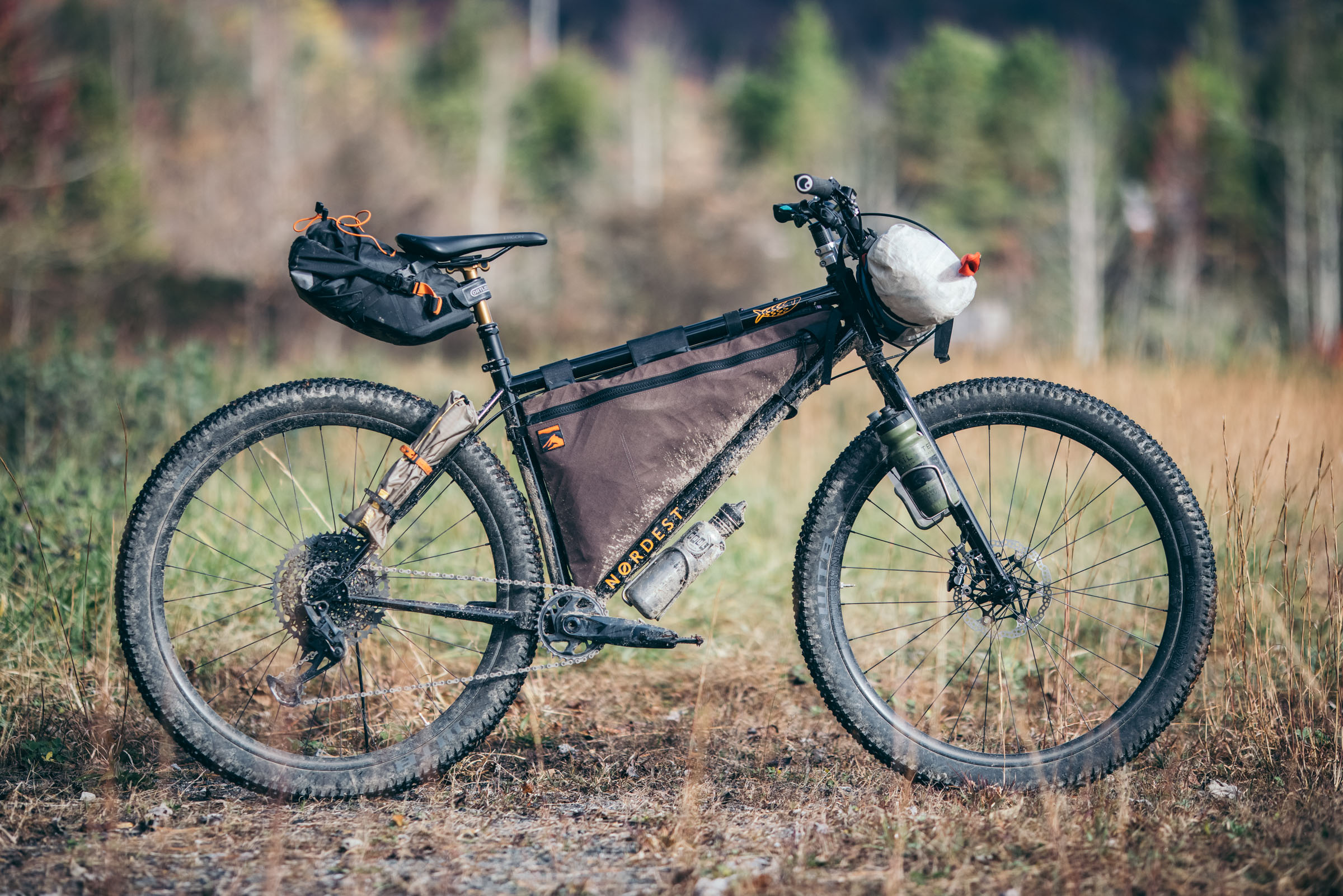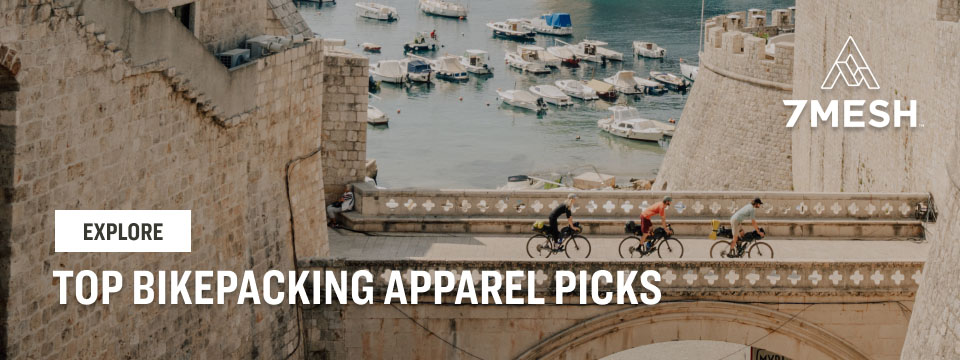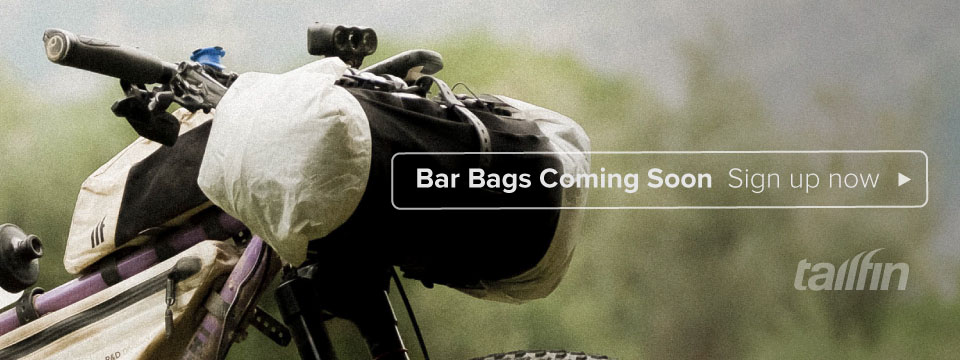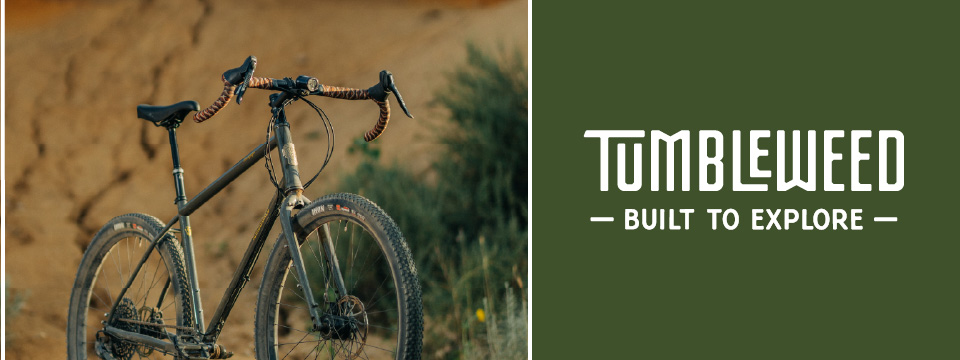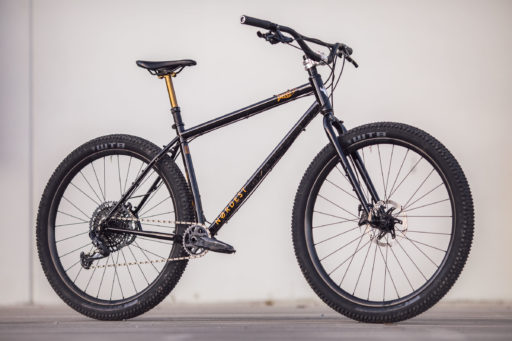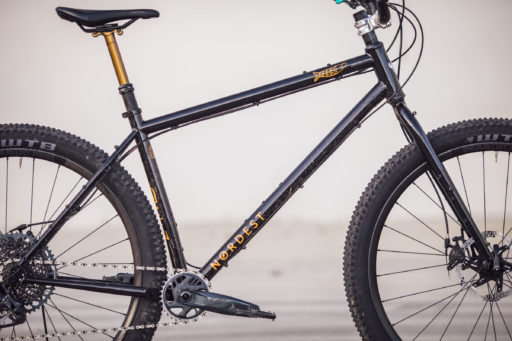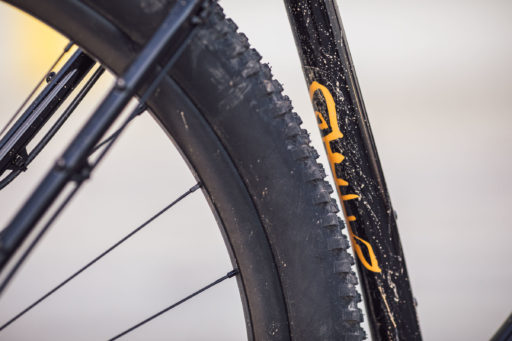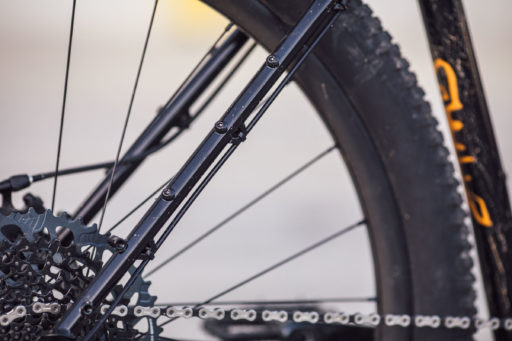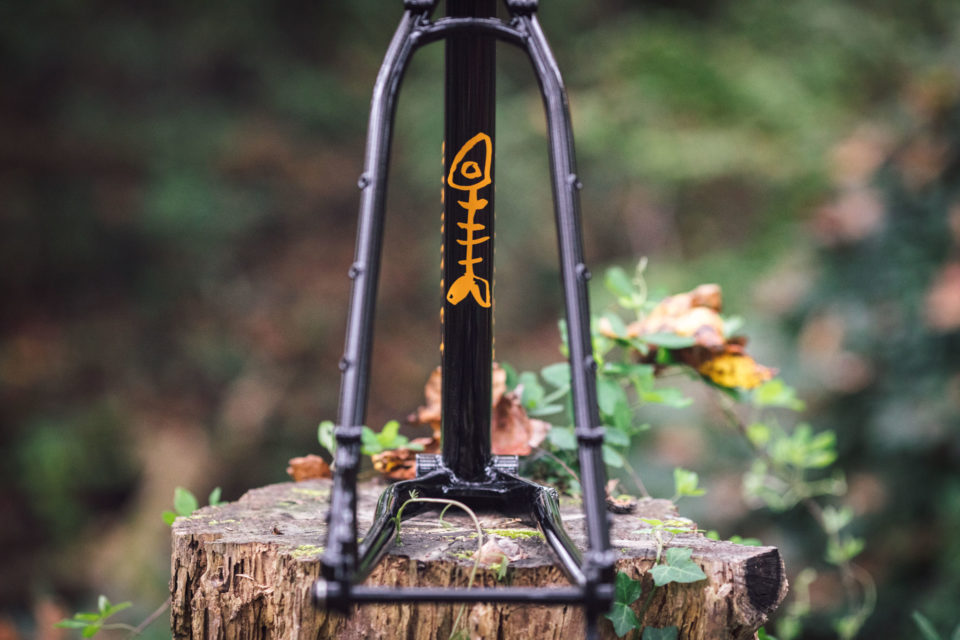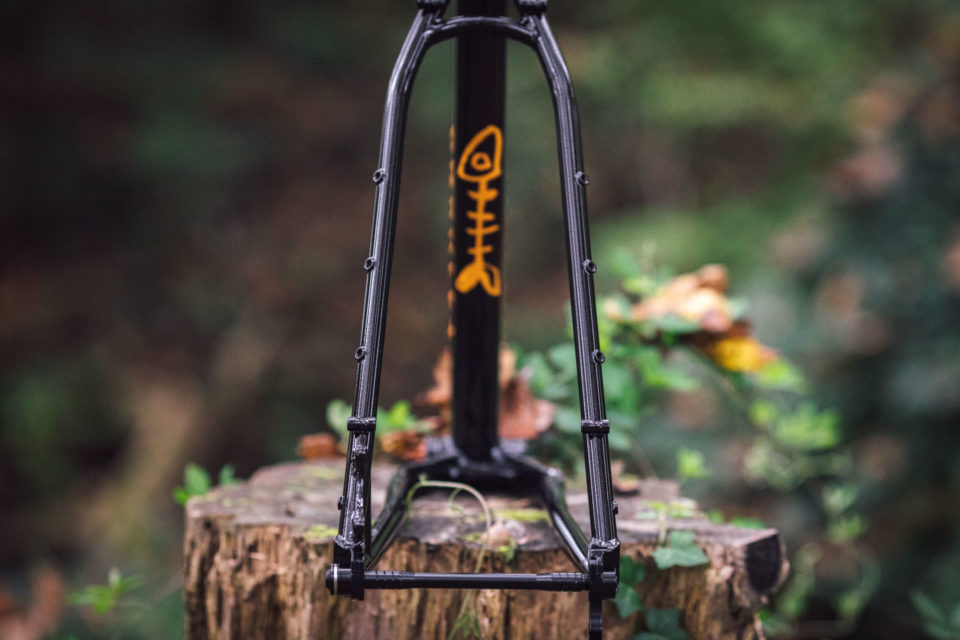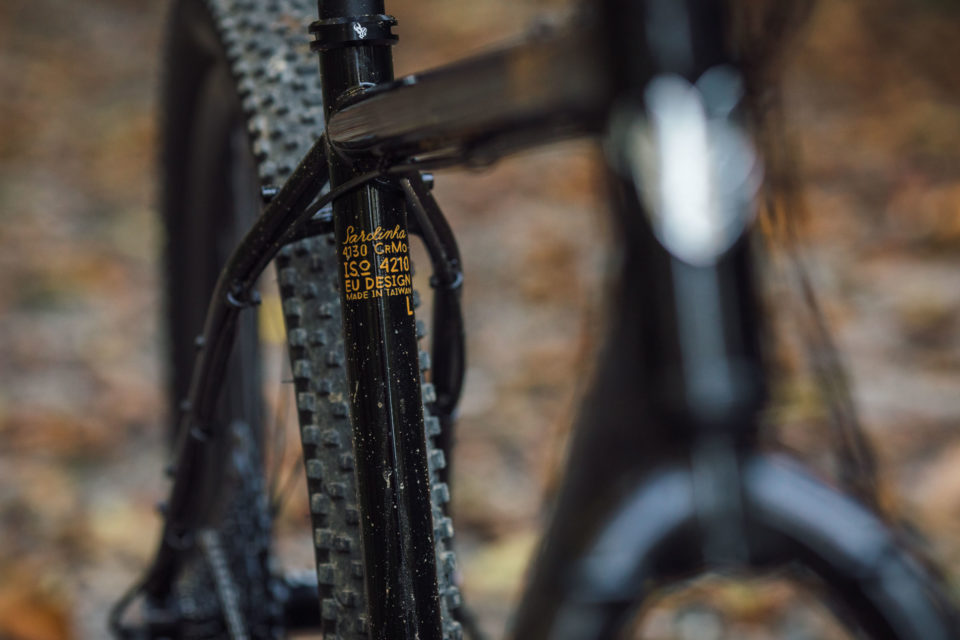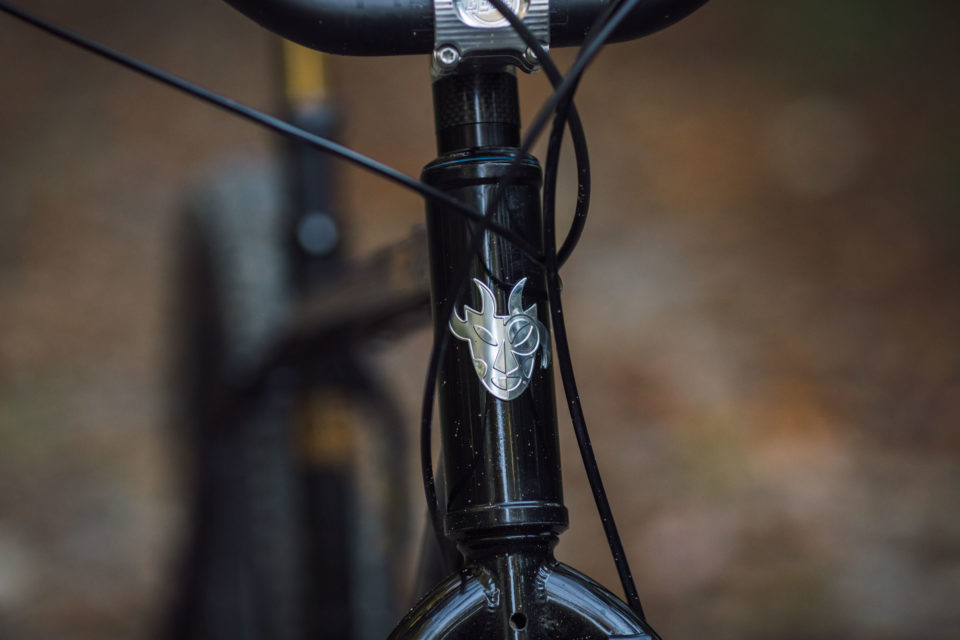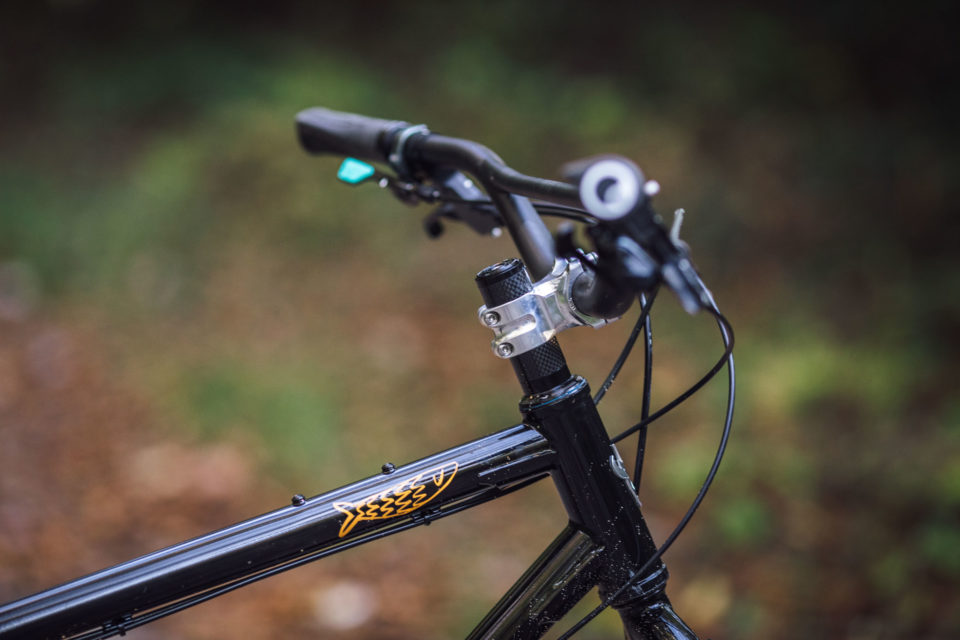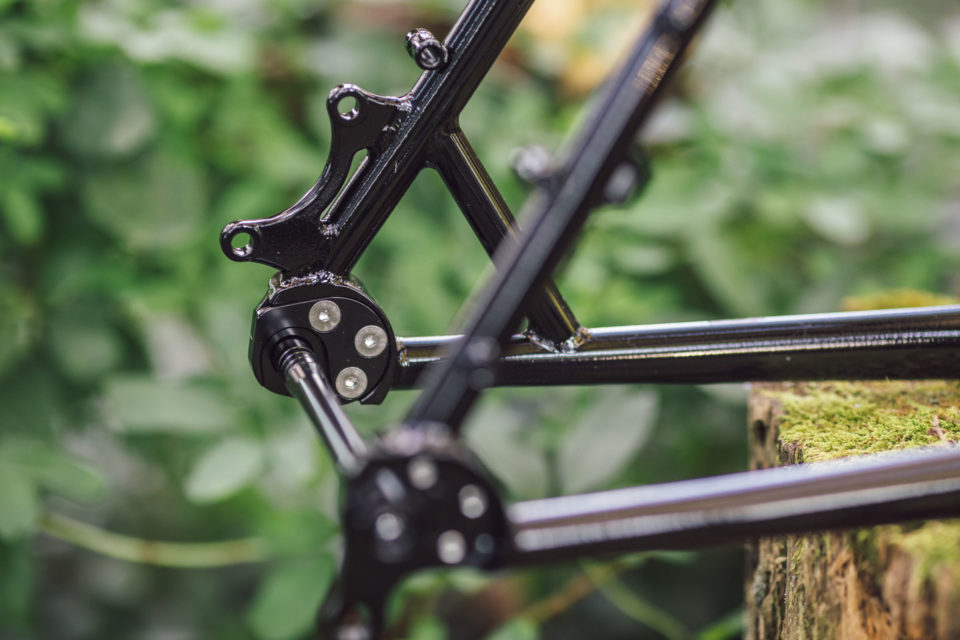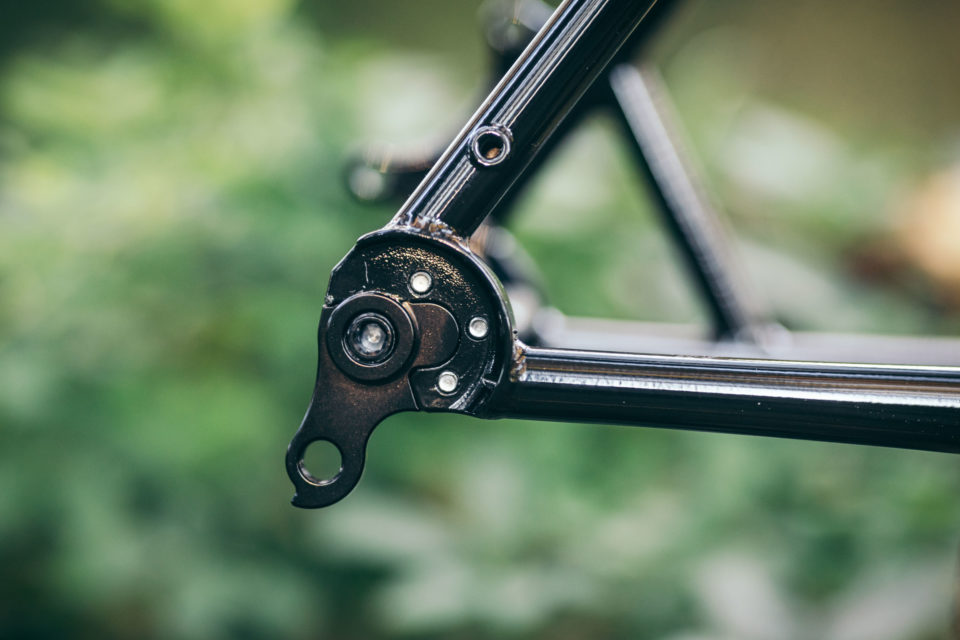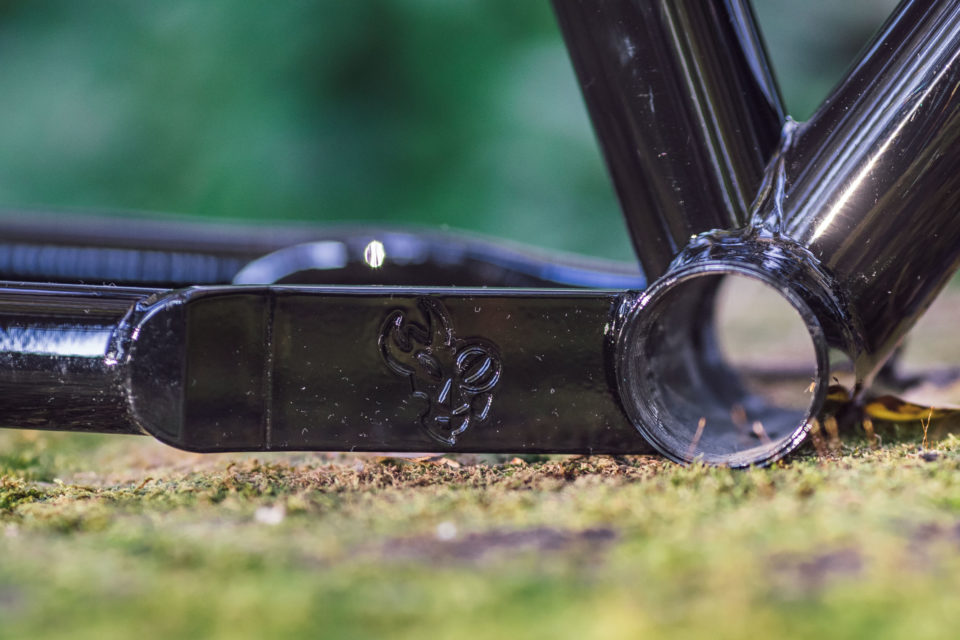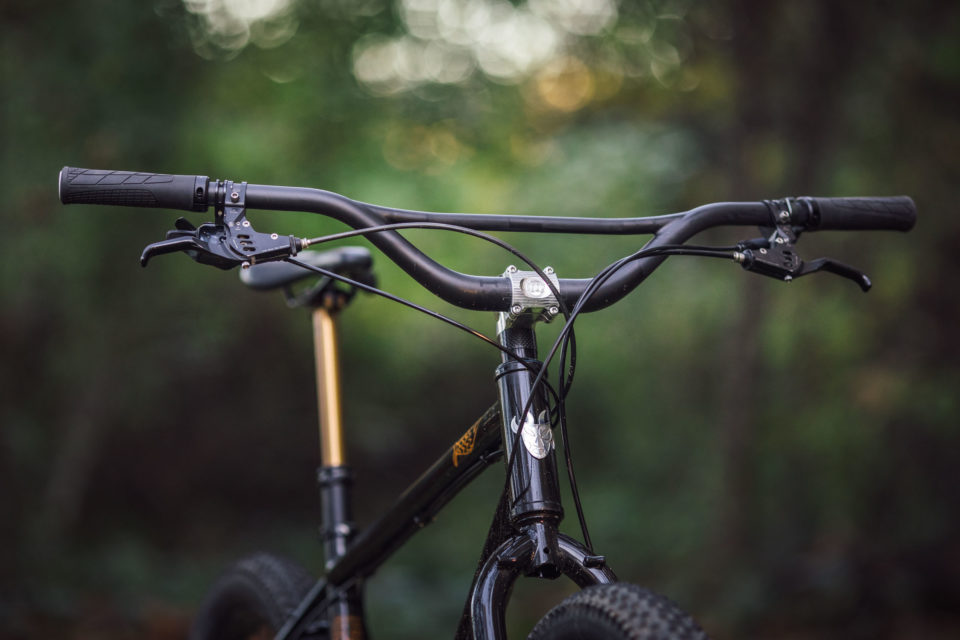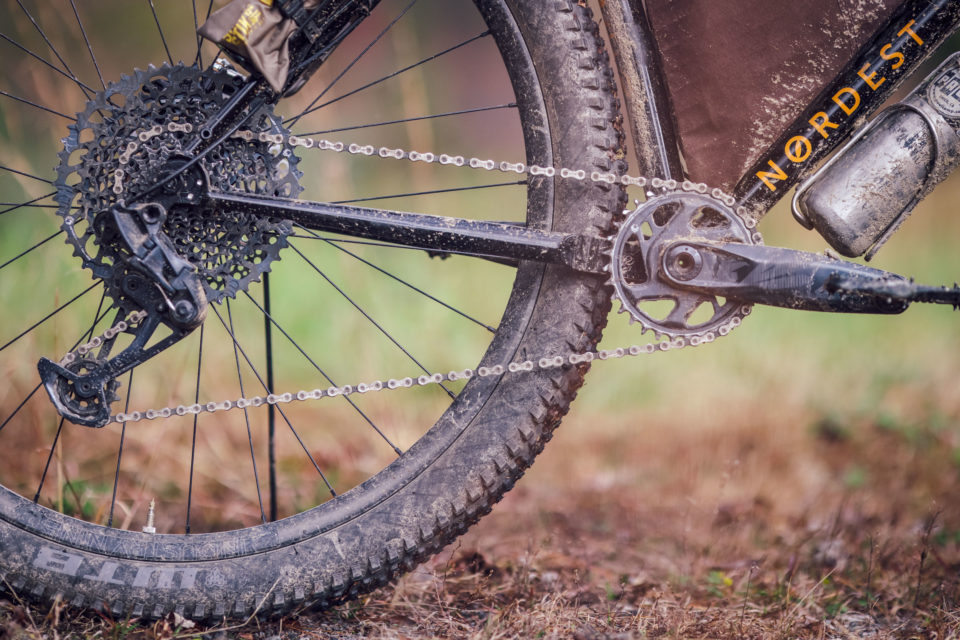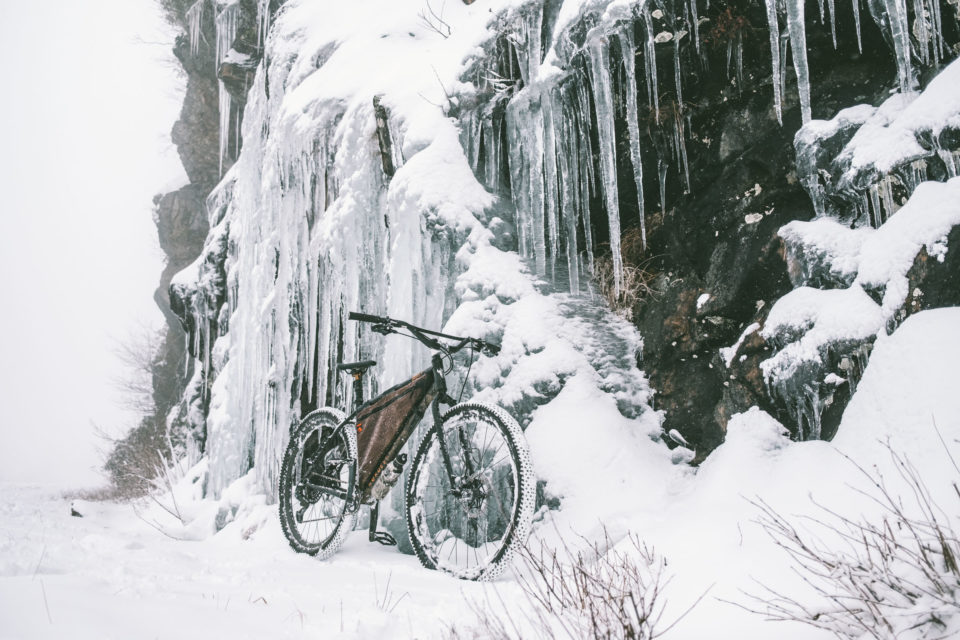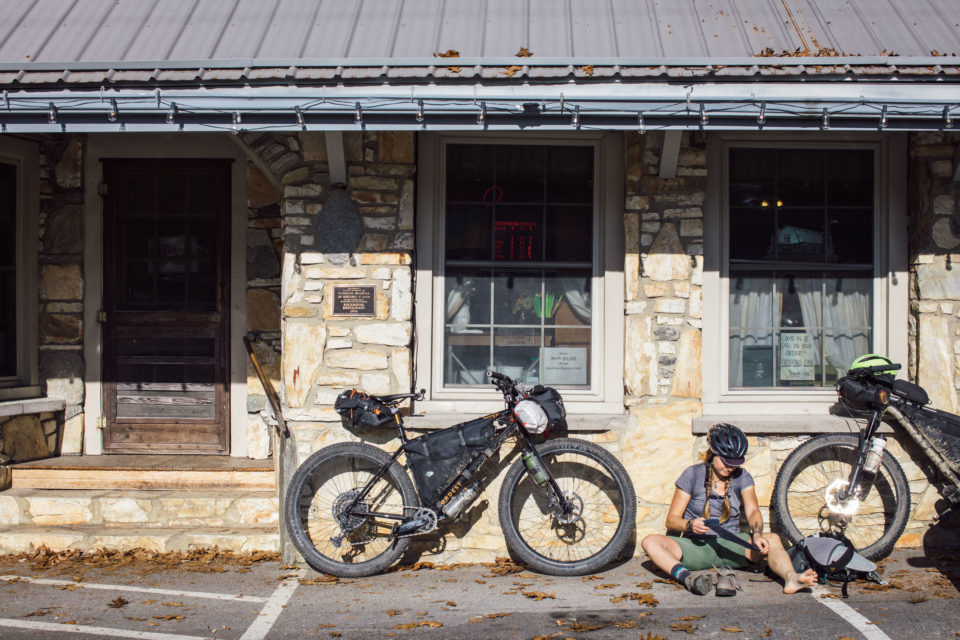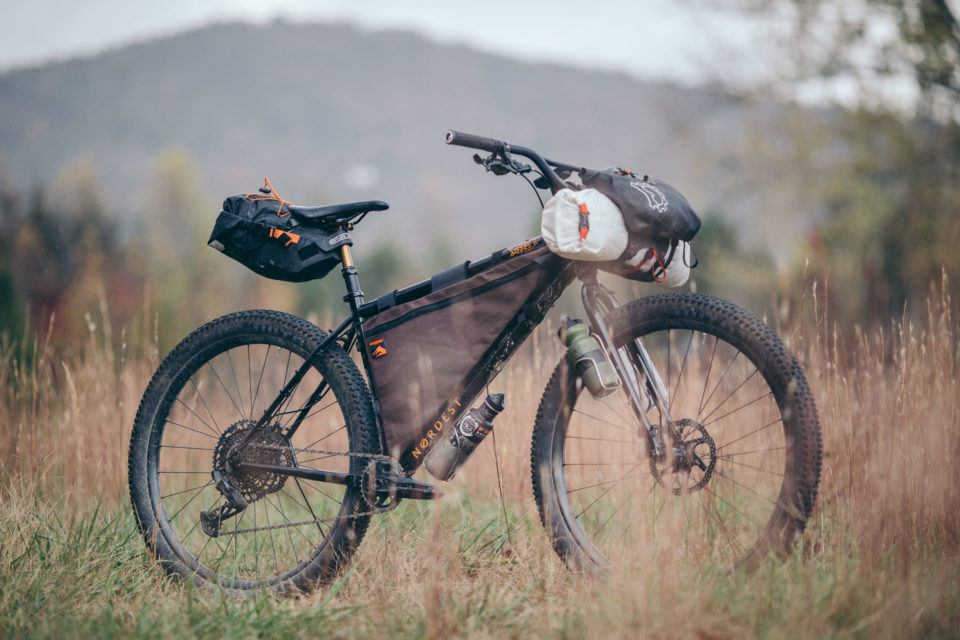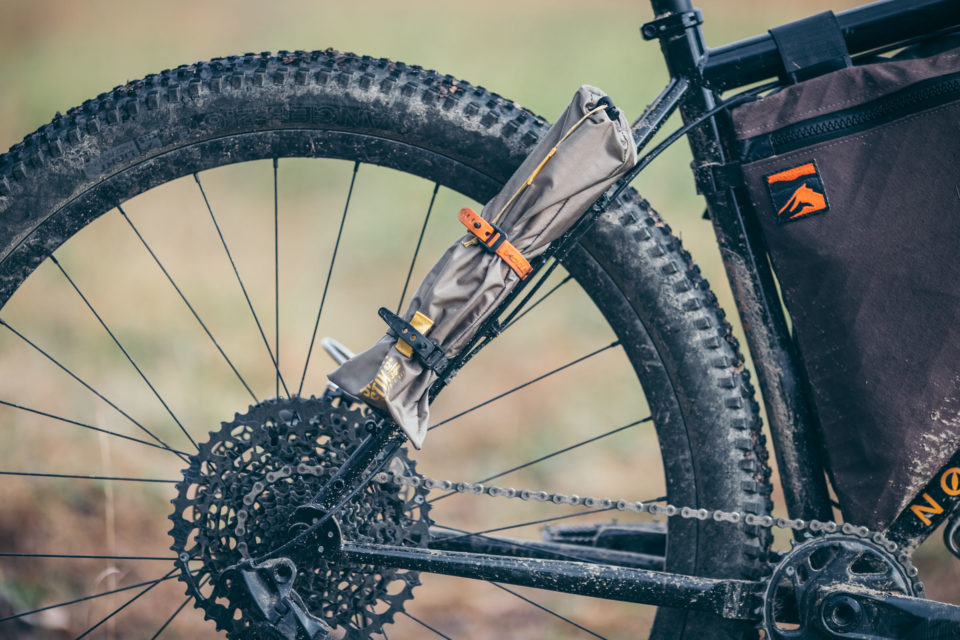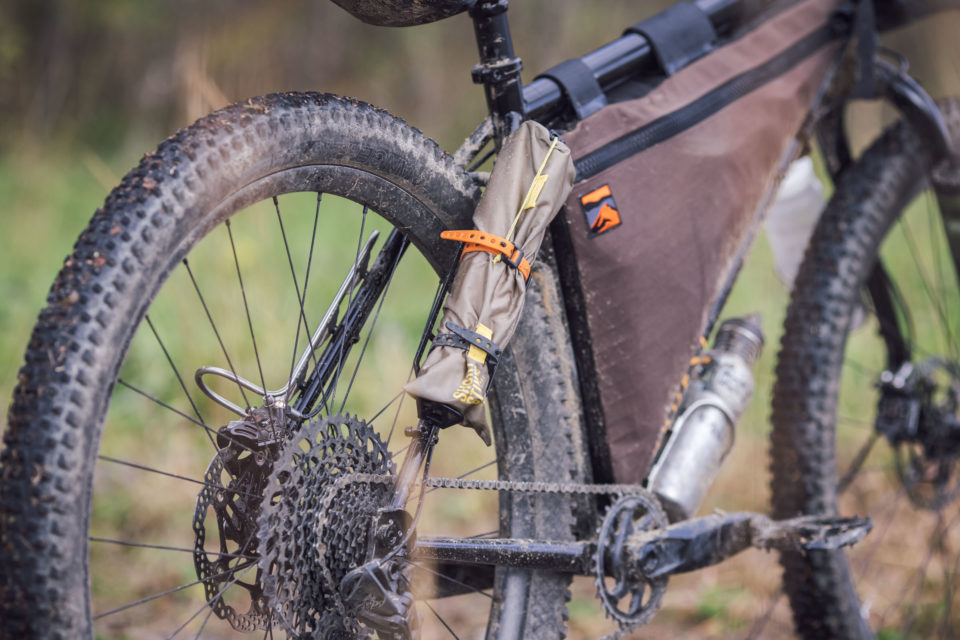Nordest Sardinha Review: One Size Fits
Share This
With compelling geometry, all the right provisions, and an historically contemplative name, the Nordest Sardinha has been on our radar since it was first announced. Fortunately, we finally got to put the Sardinha II through its paces for this long-term review. Find all the details and loads of photos here…
I’ve had my eye on the Nordest Sardinha since its release back in 2018. At that time Nordest Cycles was best known for their long and slack Bardino hardtail, and the Sardinha was added to its lineup as an in-between trail and multi-day adventure rig. The Sardinha borrowed a few geometric sensibilities from the Bardino and added plus tires, a rigid chromoly fork, and tons of mounts, making it one of the more bikepacking-forward mountain bike options on the other side of the pond. It’s now undergone two iterations, and thankfully I waited for the most recent Sardinha II to pick one up for a test ride. It was crystal clear from the first pedal stroke that this bike was special, but I’ve now managed to put nearly 1,200 miles on it for this long-term review.
For those unfamiliar, Nordest is a small company based in the Spanish archipelago of the Canary Islands. The company’s founder, Pedro Jeronimo, has deep roots in the rugged and wild region of Trás-os-Montes in northeast “Nordeste” Portugal. That heritage is at the root of much of Nordest’s identity and product naming. The most obvious example is the company’s rather interesting logo and headbadge, which is based on the traditional masks used in the Transmontane Carnival.
It was that etymological and historical narrative that initially lured me into the Sardinha, even with its interesting geometry and nicely appointed steel frame. Pedro delved deep into his Nordeste roots for inspiration on this one. As the story goes, during the Middle Ages Almocreve merchants traveled from village to village across Nordeste’s steep slopes on saddlebag-laden pack mules to peddle their goods. One of the more popular items stowed among these bags was sardinhas (sardines). If that’s not a compelling backstory for a rig built to tackle burly trails loaded with gear, I don’t know what is.
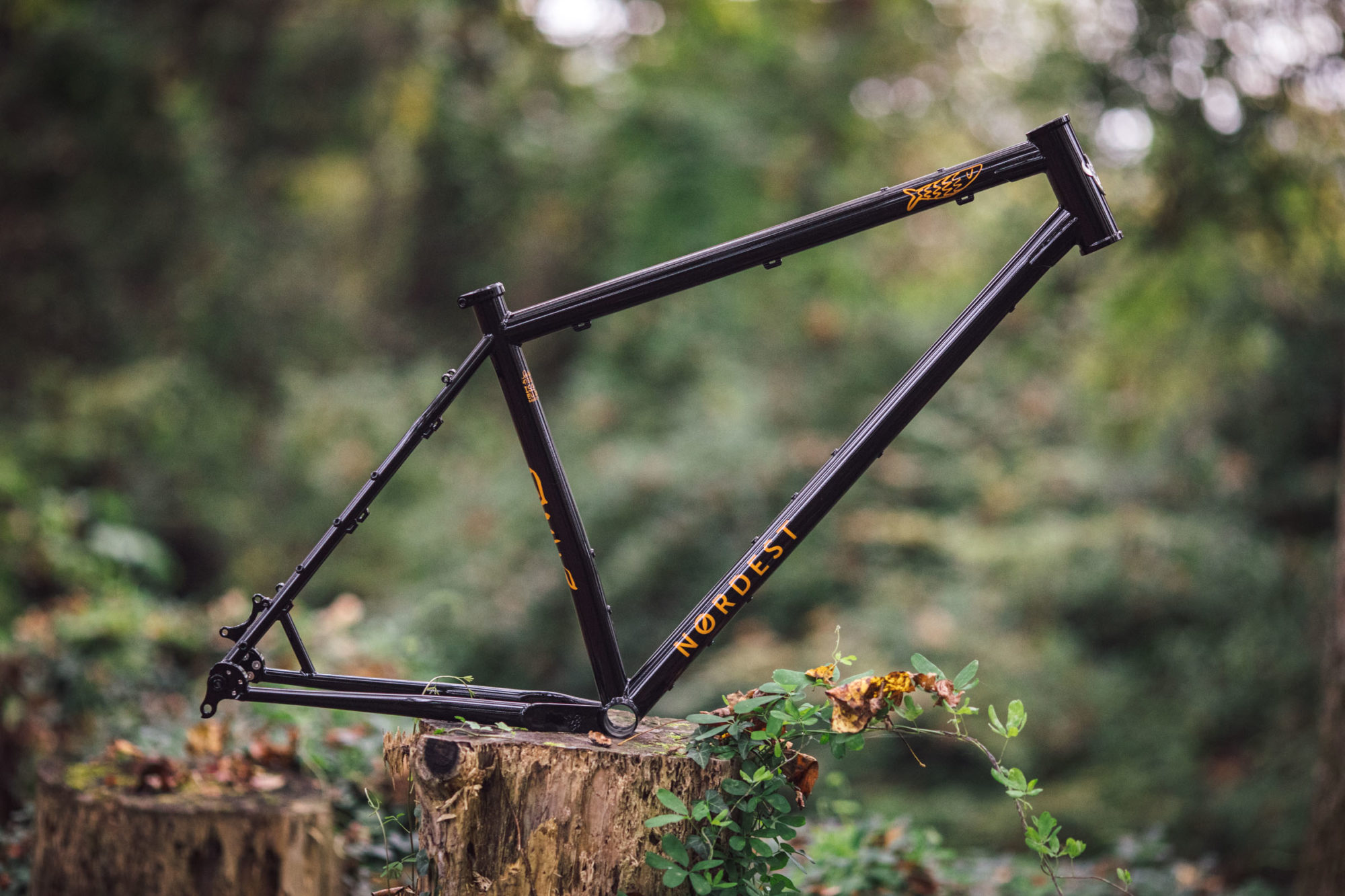
- Highlights (Size L)
- Angles: 67° Headtube, 74° Seattube
- Reach/Stack: 485/622mm
- Bottom Bracket: 73mm Threaded / 60mm drop
- Hub specs: 148×12 (rear); 110×15 (front)
- Seatpost Diameter: 31.6mm
- Max Tire Size: 29 x 2.6”
- Price: 701.65€ (frame/fork/headset)
Frame Details
Origin story aside, I would consider the Nordest Sardinha to be a bike fit for much more than just load-carrying duties. It’s equal parts trail bike and bikepacking rig, and in my view, that’s a really good mix. The latest version of the Nordest Sardinha II frame features a few tweaks and updates from the original version, inching it closer to perfection. It has the same double butted 4130 chromoly frame, but with a steeper seat tube angle, larger tire clearance for wide trail 29er tires, internal dropper seat post routing, and a shorter headtube. The frame also has rack mounts front and rear, three-pack mounts on the top and bottom of the downtube and each fork leg, an additional pair on the seat tube. Perhaps the most interesting update is the addition of three threaded eyelets on each seat stay.
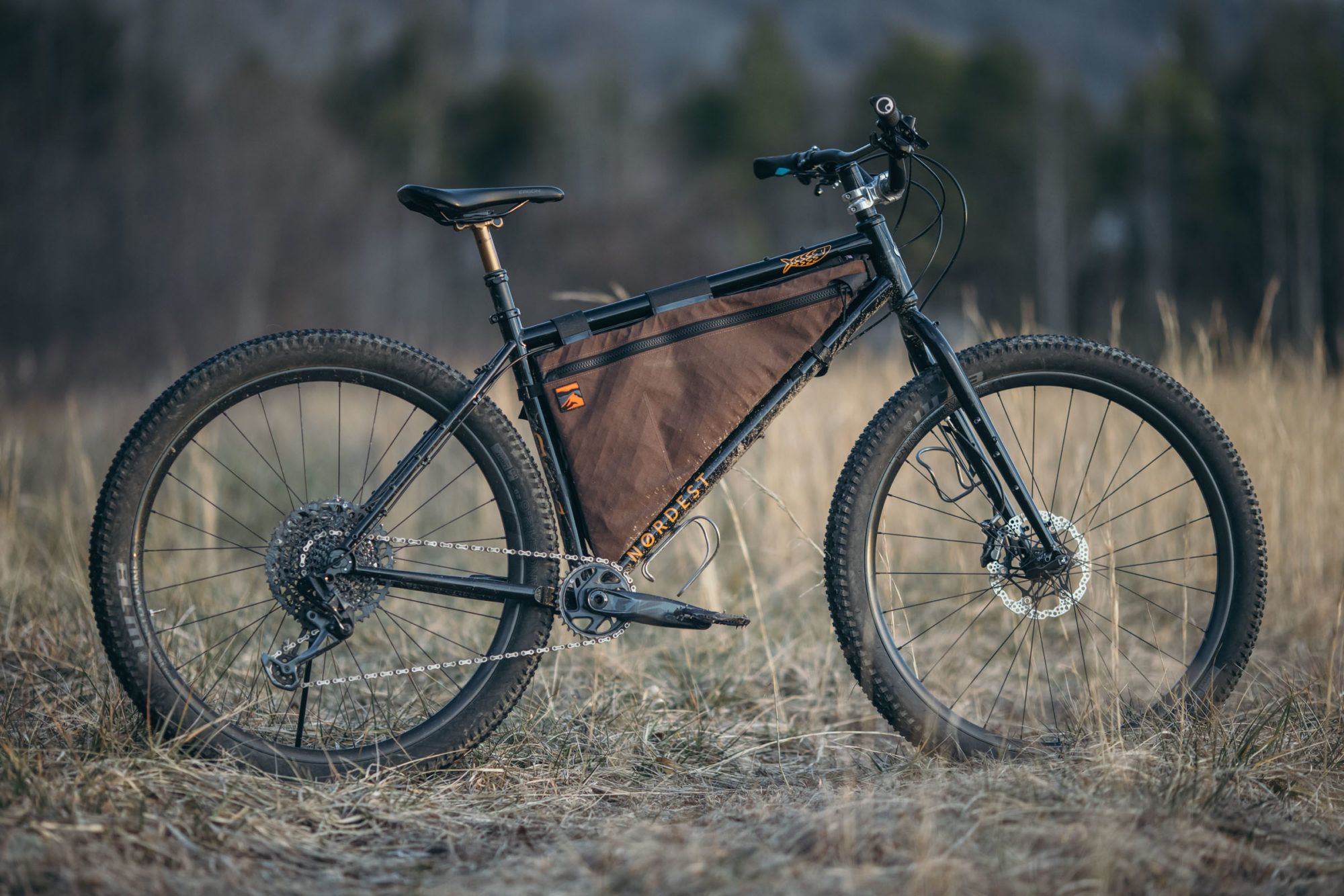
One thing to note about tire clearance. While Nordest states that the Sardinha II can clear a 29 x 2.6” tire, that’s not without an asterisk. There’s plenty of clearance on the sides, and the fork has plenty of room. However, there’s not much space at the seat tube. As you can see in the photos above, the frame uses a pair of bolt-in swappable aluminum dropouts in the rear, and Nordest currently only offers one design. When shod with 29 x 2.6” tires (WTB Rangers in this case), these place the rear tire just millimeters from the seat tube. I put a piece of helicopter tape in the seat tube to protect it from gravel or debris stuck to the tire tread. I’m quite surprised that it isn’t torn to shreds at this point. Ideally, Nordest would add sliding rear dropouts to this frame, which would also make it capable of being set up with an internally geared hub or as a singlespeed. Or, at the very least, perhaps they could make a slightly offset dropout insert. What I hope they DON’T do is curve the seat tube. I’m not a big fan of the effective angle offest generated by curved seat tubes.
As you may have guessed, all the aforementioned mounts don’t make for a ultra-lightweight frame. I received the frame and fork to build up and was initially surprised by its weight out of the box. The size L frame weighs a cool 2.97 kilograms (6.5 pounds) and the fork another 1.37 kg (3 lbs). Fortunately, I was able to build it up with some svelte components—including carbon rims and a carbon handlebar—that yielded a fairly lightweight 13.43kg (29.6lb) build. Before we dig into the ride, here’s the full build kit.
- Frame/Fork Nordest Sardinha II (size L/XL)
- Fork Nordest Sardinha II
- Wheels Industry Nine Enduro S Carbon
- Tires WTB Ranger 29 x 2.6 (Light/Fast Casing)
- Brakes Hope Tech 3
- Crankset SRAM Eagle GX
- Deraileur(s) SRAM Eagle GX
- Cassette SRAM Eagle GX 10-52T
- Shifter(s) SRAM Eagle GX
- Saddle Ergon SMC
- Seatpost Fox Transfer 175mm Dropper
- Seatpost Lever PNW Loam Lever
- Handlebar Whisky Milhouse
- Stem PAUL Boxcar 50mm
- Grips Ergon GA3
- Headset Cane Creek Forty
One thing to note is that this bike was built up with an excellent roster of components, some of my personal favorites. The Enduro S wheelset and Whisky Milhouse handlebar kept the overall built light while the WTB Rangers kept it rolling quickly. Additionally, the Transfer dropper post is bar none, as are the Hope Tech 3 brakes, which I’ll be reviewing soon. It’s also specced with the full Eagle GX group, which I reviewed a little while back.

First Ride Archeology
Despite its heavy frame and fork, I was immediately blown away by how balanced, spry, and comfortable the Sardinha felt. It helped to have the fast WTB Rangers and carbon trimmings, but still, it was a shockingly quick, nimble, and perfectly compliant frame, despite its weight. It also felt fairly stable when pedaling up and even more so going down. It was almost as if a light blinked on and I had found the perfect bike. I’d heard rumblings in a few places about Pedro, Nordest’s founder, operator, and chief bike engineer. He has a certain prestige in some circles, known as something of a geometry wiz. After my first ride on this bike, I was convinced, so I dug a little deeper and asked Pedro how he got started.
Pedro Jeronimo is a mechanical engineer by trade but he immediately mentioned that his lifelong dream was to own a bike company, ever since he was in grade school. About 13 years ago Pedro set about to have a full-suspension gearbox bike frame made for the type of riding he was interested in. He worked with Nicolai bikes to accomplish this, but took all that experience and rolled it into building bikes for friends and ultimately into his own bike brand, Jeronimo Cycles. Under that brand, Pedro built approximately 500 frames (mostly titanium) over 10 years, for customers in 70 countries. This ultimately led him to create Nordest Cycles four years ago as he was sitting at a café in a remote village in the northeast of Portugal.

Geometry
Now 44, Pedro has about 30 years of serious riding experience to inform his design process, everything from enduro to road. During the time he was making custom frames, many of his customers wanted to push the envelope with what he called crazy geometries. He started mixing in these ideas and experimenting with his own bike geometries and ultimately pushed these then-risky geometries into bikes he would sell. When I asked Pedro about his geometry philosophy, he said the key was to build bikes that are fast in the corners, yet still stable on the flats and surefooted going downhill—but, they have to climb well. “I can’t ride a bike that doesn’t climb well! I also don’t look too much at weight, but place importance on reliability,” he said.
The Sardinha II’s geometry isn’t too far out of the box, although I’d consider it slightly more progressive than many other steel “bikepacking” bikes. I’ve developed an outlook that a bike’s geometry is much more than a sum of its angles and lengths. There have been quite a few bikes that exhibit a ride quality that’s nothing like I would have expected when judging by the numbers. That was kind of the case with the Sardinha II, although it went beyond expectations. Looking at it, the 67° head tube and 74° seat tube seem like a great mix for my tastes. Its 430mm chainstay and 60mm bottom bracket also look pretty good on paper, although I would have wished for a 65mm BB drop, if splitting hairs.
The magic bullet for me is Nordest’s sizing. The Sardinha is offered in M, M/L, and L sizes. Kind of odd, but when I asked Pedro about it, he stated, “I’m 1.80m (5’ 11”) tall and I never found a commercial frame for my size, [medium] is too small and [large] is too big for me, so I had to design frames for me between the M and L sizes. When I decided to make standard sizes, it was clear that my brand would always have an M/L size. After that it was easy, an M is a little smaller than a traditional M and an L is a little bigger than a traditional L. In terms of cost, having only three sizes instead of four facilitates manufacturing and logistics.”
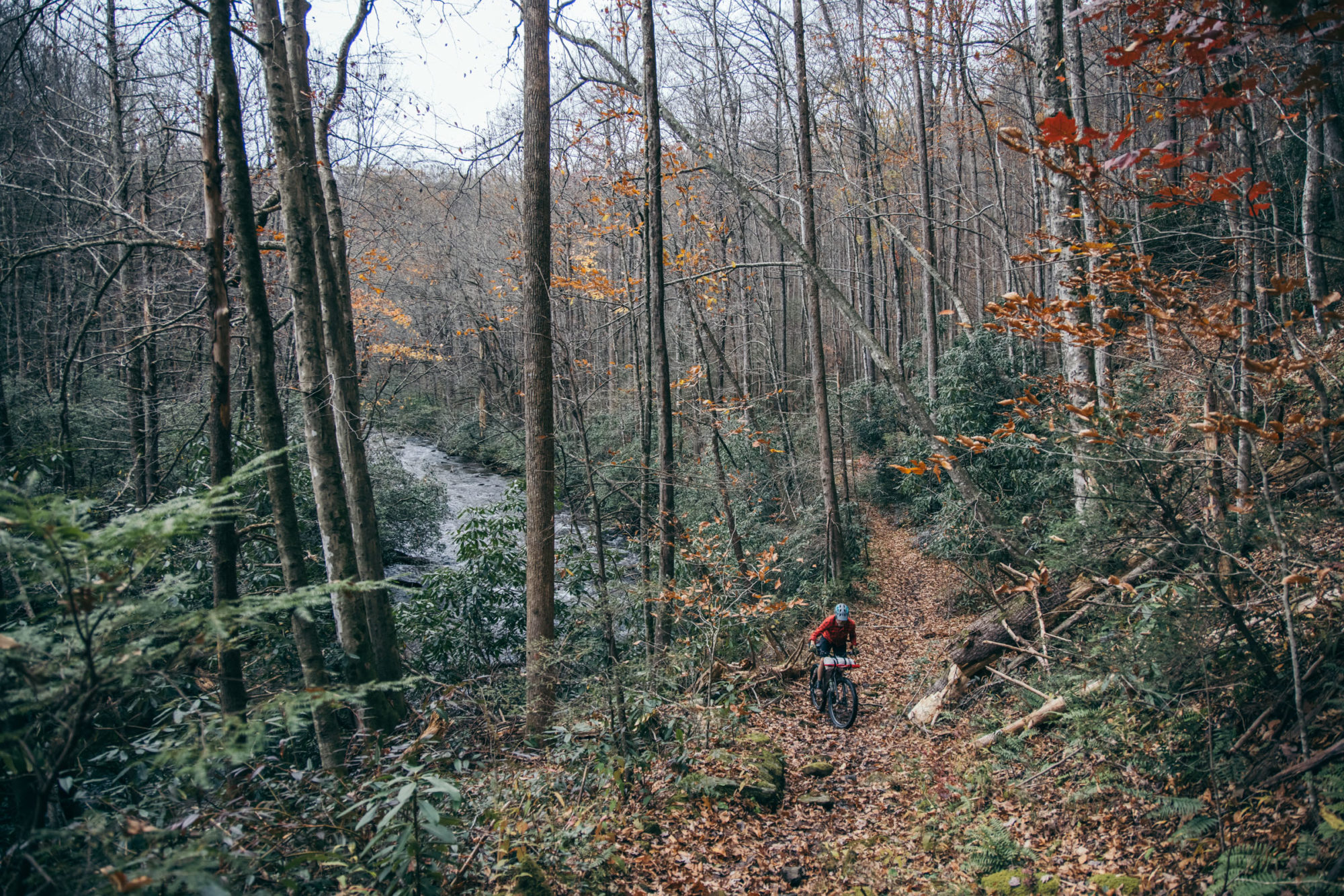
L on the Trail
I’m an even 6’ (1.83 meters) tall with really long legs and arms and I’ve always felt like I’m kind of in between a large and XL. However, I’ve always opted for large mountain bikes as XLs generally feel a little too big, particularly for a singletrack trail bike. Having ridden a few XL trail bikes by default, I was a little worried about how the larger-than-large Sardinha would fare. However, with a goldilocks reach of 485mm and a 622mm stack height, the size L Sardinha II was eye-opening. The bike’s fleet-footed geometry, perfect sizing, and ability to run a short stem and riser bars make it almost the perfect bike for me. On my first few singletrack rides, I was blown away at how fluid and agile it felt, given the size. It descends confidently with graceful reflexes, and it also feels incredibly sure-footed when rolling slow on technical sections.
Even more surprising is that it pedals extremely efficiently and tracks fairly well on gravel. That was likely helped by the fast-rolling WTB Rangers, but it’s a pretty quick bike. The Sardinha climbs really well too. A reader recently reported a little front-end wander on the steep stuff, but I’ve been really impressed with the way it climbs, both on singletrack and more meandering gravel ascents. The over-the-pedals 74° seat tube (74.5 on the M/L) balances out the 67° head tube. It’s a bike I feel like I could pedal all day long, and I did just that on a few occasions.

While Out Bikepacking
I took the Nordest Sardihna II out bikepacking on several occasions, including a five-day scouting trip that involved gravel, pavement, singletrack, and everything in between. In short, I love this bike when loaded up almost as much as I do on the trail. There are a few perks built right into the frame. The most obvious is the gargantuan frame bag. Rockgeist made this beautiful “Red Rocks” X10 Cotton Duck bag. Steel frames are always best for maximizing frame space, and the Sardinha takes this up a notch with a top tube that’s not too low and the slightly extra large frame sizing.
The other interesting and unique feature are the three-pack mounts on each seat stay. Sardinha was one of the first bikes to production with these and I was pretty enamored with the idea when I first saw it. In theory, it’s an excellent idea, and one that could add just a little extra storage to your setup, but in practice it falls a little short. Let me clarify. The first time I used these I strapped bulkier items like a sleeping pad and a camp chair onto both a King Cage Manythings Cage and a Widefoot Cargo Cage. I wear a size 10 (42.5) shoe and immediately had heel contact. Not full impact, but more of a brushing. Fortunately, I ride flats, so I was able to adjust. But in the end I had to change what was loaded in this spot. Instead of risking heel clearance issues I swapped the larger items for a set of Big Agnes ShortStik tent poles, which is a perfect use of this feature. Other things that you could consider might be a small tenkara rod or other such long, slender item. Folks with smaller shoe sizes might be able to get away with larger items, or water bottles, but I found it to be a little tight.
Aside from this one little hiccup, I have no complaints regarding the Sardinha as a bikepacking rig. I found that the geometry transitions nicely from a trail bike to a long-day-friendly rig, and it’s not overly stiff.

Forked Up Nordest Sardinha II
I recently put a suspension fork on the Sardinha, because, well, I had to know. The Cane Creek Helm MkII is a 120mm fork is technically a bit long for the Sardinha frame, which is designed around a 483mm fork length (or a 100mm travel fork with 20% sag). Unfortunately, this raised the BB a little and increased the stack, which ultimately led to me replacing the high rise Milhouse handlebar with a standard 20mm riser bar. With that, I suppose this is another con I have with the frame; I’d like to see it designed around a 120mm fork. That said, I don’t really think the 120mm fork made it lose much if it’s mojo. It wandered a bit more on climbs and maybe lost a little bit of front end traction, but otherwise, it’s still a hell of a lot of fun. A 110mm fork would probably be ideal on this bike. That combined with 2.6″ tires might just make an ideal backcountry hardtail.
- Model Tested: Nordest Sardinha (size large)
- Actual Weight (frame+fork): 9.7 pounds (4.4 kilograms)
- Place of Manufacture: Taiwan
- Price: 849€ (frame/fork/headset)*
- Manufacturer’s Details: NordestCycles.com
*The price is with 21% local VAT taxes, if you order from the US for example, Nordest will revoke this on the website. Note that you can also get the frame only for 649€. These prices include EU shipping.
Pros
- Excellent geometry that’s super fun on the trail and holds its own bikepacking and on mixed terrain
- Affordable and bulletproof steel frameset
- Unique sizing that might be a great fit if you’re in between sizes
- Loaded with mounts for anything you might need
Cons
- Seat stay mounts are truly only usable if you have a smaller shoe size
- A sliding dropout would be better; large 2.6” tires barely clear the seat tube
- Heavy frame
- I would prefer if it were optimized for a 120mm fork.
Wrap Up
I could probably sum up the review of the Nordest Sardinha in one quick sentence: I haven’t had this much fun on a rigid bike in a long while. Considering its mount-laden, not-so-light frame, I was pleasantly surprised by how quick and nimble it was. And even more surprised that it became one of my all time favorite rigs I’ve ridden to date. Aside from a really nice build, I think that a big part of that is the sizing. The slightly bigger than average large simply fit like a glove, provided more frame triangle space than most hardtails, and still maintained an incredibly agile feel. Lastly, the Sardinha’s all-day pedal-friendly stability wasn’t sacrificed for that playful character that it exhibited on the trail. As mentioned, there are a couple structural issues, such as the usability of the seat stay mounts and the lack of a sliding rear dropout. And in an ideal world, it would be adjusted for a 120mm fork. But all in all, given its price, the Nordest Sardinha is a gem of a bike, and if you’re looking for a one stop rig, it should definitely be on your list.
Please keep the conversation civil, constructive, and inclusive, or your comment will be removed.






